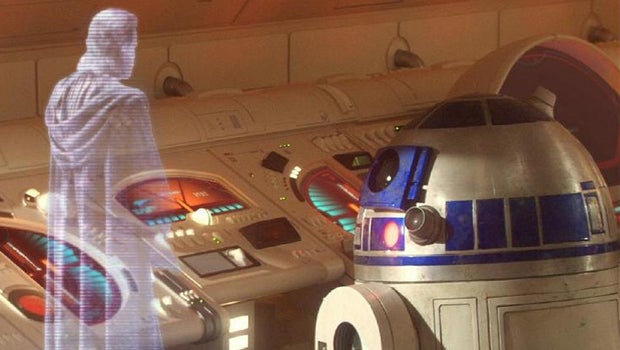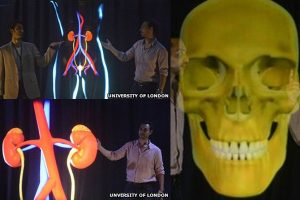Giant holograms pioneered for medical students

Giant holograms have been pioneered by two junior doctors to help medical students master their studies of the human body.
Showcasing the huge holograms during a test lecture last week, the two London-based junior doctors presented a 4m high 3D graphic of a kidney using the hologram technology.
Hosted by the University of London, the lecture was used to present several animated holograms the duo of junior doctors are developing.
Dr Kapil Sugand of St George’s Hospital and Dr Pedro Campos from Imperial College have developed the holograms, which are all animated and provide an easier to process view of the human body than offered by textbooks or Power presentations.
“Research in educational sciences has shown the attention span of the average student is 20 to 30 minutes, but these lectures are at least an hour,” said Dr Sugand. “The human body is a very complex machine.”
Intended to make it easier for medical students to appreciate and understand the intricacy of the functions of the human body, the animated holograms are created by three projectors and can be controlled by the lecturer. They are so giant they are suitable for large scale auditoriums.
The pair of junior doctors already invested £10,000 into the hologram project and have created a small library of projectors to aid medical lectures. They include a sequence that shows how malaria affects various parts of the body.
The University of London where the lecture was held has said the technology is not yet ready to be rolled out into educational establishments.
“The cost would be prohibitively expensive,” said a spokesperson for the University of London. “It’s more a proof-of-concept at this stage.”
Dr Sugand identified that the hologram technology isn’t meant to be a teaching aid that assists the dissection of corpses.
“Nothing can substitute dissecting a cadaver – it is the optimal and most traditional way of learning anatomy, but multimedia has become a way of complementing, not replacing, that process.”
Next, read our pick of the best TVs of 2013.

Via: BBC

